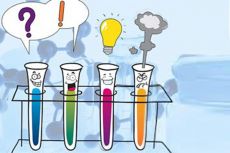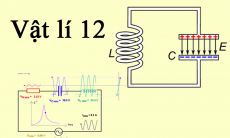Read the following passage and choose the correct answer to each of the questions.
The word "robot" first appeared in a 1921 stage play by Czech writer Karel Capek. In the play, a man makes a machine that can think, which he calls a robot and which ends up killing its owner. In the 1940s, the American science fiction writer, Isaac Asimov, wrote a series of stories about robots and invented the term 'robotics', the science of robots. Meanwhile, in the real world, the first robots were developed by an engineer, Joseph F. Engelberger, and an inventor, George C. Devol. Together they started Unimation, a manufacturing company that produced the first real robot in 1961, called the Unimate. Robots of this type were installed at a General Motors automobile plant and proved to be a success. They worked reliably and saved money for General Motors, so other companies were soon acquiring robots as well.
These industrial robots were nothing like the terrifying creatures that can often be seen in science fiction films. In fact, these robots looked and behaved nothing like humans. They were simply pieces of computer-controlled machines, with metal "arms" or "hands". Since they were made of metal, they could perform certain jobs that were difficult or dangerous for humans, particularly jobs that involve high heat. And since robots were tireless and never got hungry, sleepy, or distracted, they were useful for tasks that would be tiring or boring for humans. Industrial robots have been improved over the years, and today they are used in many factories around the world. Though the use of robots has meant the loss of some jobs, at the same time other jobs have been created in the design, development, and production of the robots.
Outside of industry, robots have also been developed and put into use by governments and scientists in situations where humans might be in danger. For example, they can be sent in to investigate an unexploded bomb or an accident at a nuclear power plant. Researchers also use robots to collect samples of hot rocks or gases in active volcanoes. In space exploration, robots have performed many key tasks where humans could not be present, such as on the surface of Mars. In 2004, two robotic Rovers, small six-wheeled computerized cars, were sent to Mars.
Câu 23 : Which of these statements is TRUE about Karel Capek?
Hãy suy nghĩ và trả lời câu hỏi trước khi xem đáp án
Lời giải:
Báo saiKiến thức: Đọc hiểu
Khẳng định nào sau đây là ĐÚNG về Karel Capek?
A. Ông là nhà viết kịch nổi tiếng người Mỹ.
B. Ông là người đầu tiên tạo ra từ "robot”.
C. Ông đã phát minh ra một cỗ máy có thể suy nghĩ như con người.
D. Ông sai khiến một con robot giết người.
Thông tin: The word "robot" first appeared in a 1921 stage play by Czech writer Karel Capek.
Tạm dịch: Từ "robot" xuất hiện lần đầu tiên trong một vở kịch năm 1921 của nhà văn người Séc Karel Capek.
Đáp án cần chọn là: B
Câu 24 : What does the word they in paragraph 2 refer to?
Hãy suy nghĩ và trả lời câu hỏi trước khi xem đáp án
Lời giải:
Báo saiKiến thức: Đọc hiểu
Từ they trong đoạn 2 nói về điều gì?
A. sinh vật đáng sợ
B. con người
C. phim khoa học viễn tưởng
D. robot công nghiệp
Thông tin: These industrial robots were nothing like the terrifying creatures that can often be seen in science fiction films. In fact, these robots looked and behaved nothing like humans. They were simply pieces of computer-controlled machines, with metal "arms" or "hands".
Tạm dịch: Những robot công nghiệp này không giống những sinh vật đáng sợ thường thấy trong các bộ phim khoa học viễn tưởng. Trên thực tế, những robot này nhìn và cư xử không giống con người. Chúng chỉ đơn giản là những mảnh ghép được điều khiển bằng máy tính, với "cánh tay" hoặc "bàn tay" bằng kim loại.
Đáp án cần chọn là: D
Câu 25 : Which of the following is NOT mentioned as a characteristic of robots?
Hãy suy nghĩ và trả lời câu hỏi trước khi xem đáp án
Lời giải:
Báo saiKiến thức: Đọc hiểu
Điều nào sau đây KHÔNG được đề cập như một đặc điểm của robot?
A. Chúng không cần thức ăn để tồn tại.
B. Chúng có thể sống mà không cần ngủ.
C. Chúng mệt mỏi như con người.
D. Chúng có thể làm những công việc liên quan đến nhiệt độ cao.
Thông tin: Since they were made of metal, they could perform certain jobs that were difficult or dangerous for humans, particularly jobs that involve high heat. And since robots were tireless and never got hungry, sleepy, or distracted, they were useful for tasks that would be tiring or boring for humans.
Tạm dịch: Vì chúng được làm bằng kim loại, chúng có thể thực hiện một số công việc gây khó khăn hoặc nguy hiểm cho con người, đặc biệt là những công việc liên quan đến nhiệt độ cao. Và vì robot không mệt mỏi và không bao giờ đói, buồn ngủ hoặc mất tập trung, chúng rất hữu ích cho các nhiệm vụ sẽ mệt mỏi hoặc nhàm chán đối với con người.
Đáp án cần chọn là: C
Câu 26 : What can be inferred from the passage about robots?
Hãy suy nghĩ và trả lời câu hỏi trước khi xem đáp án
Lời giải:
Báo saiKiến thức: Đọc hiểu
Điều gì có thể được suy ra từ đoạn văn về robot?
A. Sự xuất hiện của chúng ảnh hưởng tiêu cực đến thị trường việc làm.
B. Chúng có thể ngăn chặn các núi lửa đang hoạt động phun trào.
C. Chúng giúp con người du hành ra ngoài vũ trụ.
D. Chúng lấy đi một số công việc nhưng cung cấp một số lợi nhuận.
Thông tin: Though the use of robots has meant the loss of some jobs, at the same time other jobs have been created in the design, development, and production of the robots.
Tạm dịch: Mặc dù việc sử dụng robot có nghĩa là mất một số công việc, nhưng đồng thời các công việc khác đã được tạo ra trong thiết kế, phát triển và sản xuất robot.
Đáp án cần chọn là: D
Câu 27 : What is the author's attitude towards robots in this passage?
Hãy suy nghĩ và trả lời câu hỏi trước khi xem đáp án
Lời giải:
Báo saiKiến thức: Đọc hiểu
Thái độ của tác giả đối với robot trong đoạn văn này là gì?
A. Ông đánh giá cao chúng.
B. Ông không thích chúng.
C. Ông nghĩ rằng chúng là một mối phiền toái.
D. Ông phát điên về chúng.
Thông tin: Though the use of robots has meant the loss of some jobs, at the same time other jobs have been created in the design, development, and production of the robots. Outside of industry, robots have also been developed and put into use by governments and scientists in situations where humans might be in danger.
Tạm dịch: Mặc dù việc sử dụng robot có nghĩa là mất một số công việc, nhưng đồng thời các công việc khác đã được tạo ra trong thiết kế, phát triển và sản xuất robot. Ngoài ngành công nghiệp, robot cũng đã được phát triển và đưa vào sử dụng bởi các chính phủ và các nhà khoa học trong các tình huống mà con người có thể gặp nguy hiểm
Đáp án cần chọn là: A
Đề thi HK2 môn Tiếng Anh 12 năm 2021-2022
Trường THPT Cao Bá Quát











